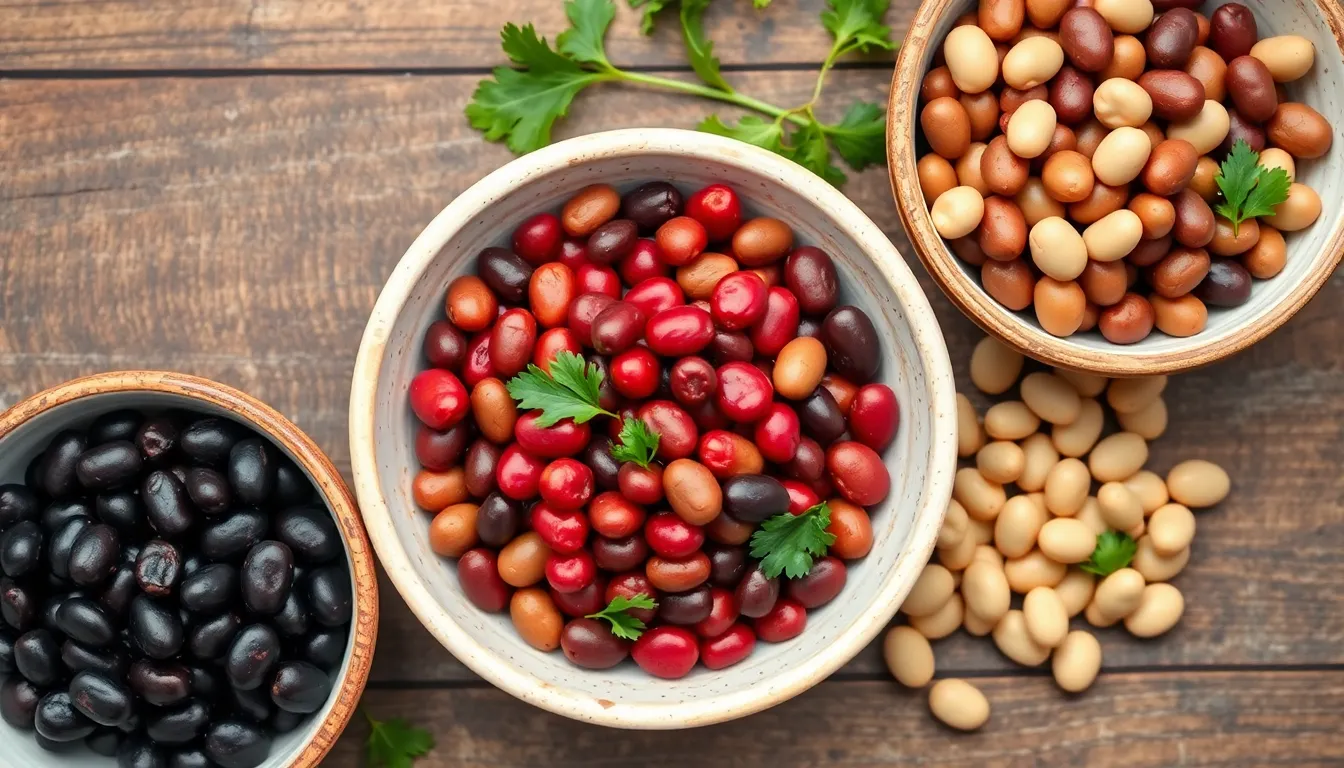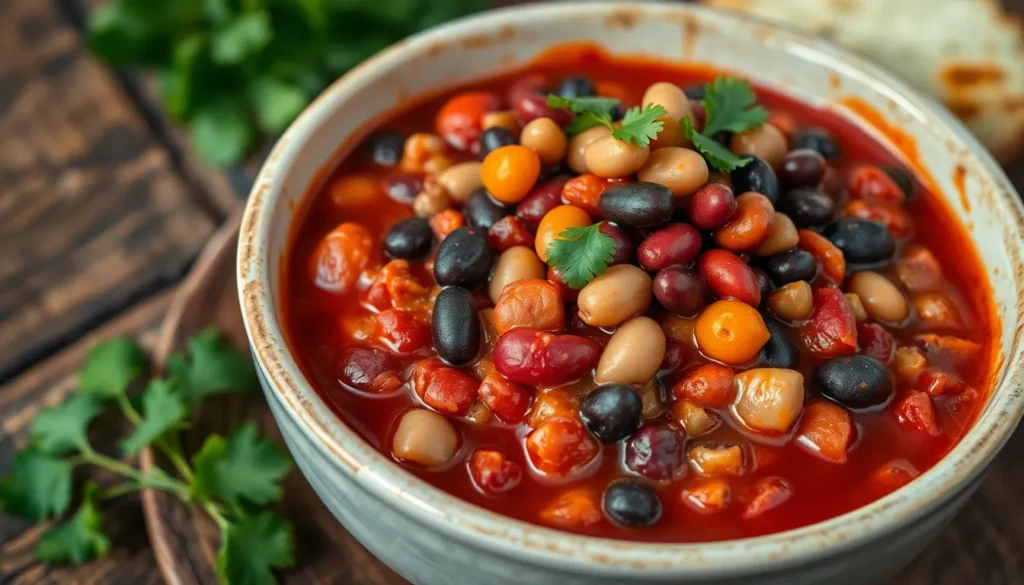Table of Contents
ToggleChili lovers unite! When it comes to creating the perfect pot of chili, the debate over which beans to use can be as heated as the dish itself. Should you stick with the classic kidney bean or venture into the wild world of black beans? With so many options, it’s easy to feel like you’re lost in a bean maze.
What Beans Go In Chili?
Kidney beans often top the list for traditional chili recipes. Their firm texture and ability to absorb flavors suit various spices well. Black beans serve as a popular alternative, providing a rich flavor and visual depth. Pinto beans add a creamy consistency, enhancing the overall mouthfeel of the dish.
Some enthusiasts prefer white beans, such as cannellini, for a lighter option that blends well with other ingredients. Each variety brings its unique characteristics, contributing to the chili’s taste and texture. Red beans stand out for their distinct flavor, often used in regional recipes like Creole chili.
A blend of beans can offer a complex flavor profile. Many home cooks experiment with combinations to personalize their chili. Choosing the right beans can depend on individual preferences and desired taste experiences.
Experimenting with different beans can lead to exciting results. While traditionalists might stick to kidney beans, others might embrace black or pinto beans. Those who enjoy exploring culinary boundaries may even combine multiple varieties. Overall, the versatility of beans allows for creativity in chili preparation.
Common Bean Varieties


Chili recipes often feature a variety of beans. Each type contributes unique flavors and textures.
Black Beans
Black beans stand out for their rich flavor and smooth texture. They absorb spices well, complementing chili’s robust profile. Their dark color adds visual contrast to the dish. Health benefits include high fiber and protein content, making them a nutritious choice. Many find black beans enhance the overall taste of chili, balancing spiciness with their earthy taste.
Kidney Beans
Kidney beans remain a traditional favorite in chili dishes. Their firm texture holds up well during cooking, providing a satisfying bite. These beans also absorb flavors effectively, enriching the chili. Varieties like dark and light kidney beans exist, allowing cooks to experiment with color and taste. Nutrition-wise, kidney beans offer essential vitamins and minerals, contributing to a hearty meal.
Pinto Beans
Pinto beans are known for their creamy consistency and versatile taste. They often create a comforting texture when cooked, blending seamlessly into chili. Pinto beans adapt easily to various spices, enhancing the dish’s flavor profile. Their brownish-pink color adds visual appeal. Rich in nutrients like fiber and protein, they support overall health and satisfaction in meal preparation.
Less Common Options
Chili recipes often include more than just the standard bean varieties. Exploring less common options can enhance flavor and texture significantly.
Cannellini Beans
Cannellini beans provide a creamy texture that complements chili’s heartiness. Known for their mild flavor, they absorb seasonings well, making them a favorable choice in subtly spiced chili. This white bean pairs nicely with traditional chili ingredients, adding visual appeal and nutritional benefits. Like other beans, cannellini beans offer high fiber content, contributing to a well-rounded meal. Incorporating cannellini beans can introduce new depth, elevating the overall experience of the dish.
Garbanzo Beans
Garbanzo beans, also called chickpeas, bring a unique twist to chili. Their nutty flavor and firm texture add contrast to softer beans often used in chili. These beans also provide a good dose of protein and fiber, increasing the dish’s healthfulness. Using garbanzo beans can create an unexpected yet enjoyable variation, appealing to adventurous eaters. Their versatility allows for easy integration into existing chili recipes, encouraging cooks to experiment with new combinations.
The Great Debate: Beans or No Beans?
The choice between beans or no beans often stirs passionate discussions among chili aficionados. Many traditionalists advocate for kidney beans due to their sturdy texture that holds up well in stews. Various chili recipes embrace kidney beans not only for their classic flavor but also for their ability to absorb spices.
Conversely, black beans offer a richer taste that enhances the overall profile of chili. They’re favored for their smooth texture, which contrasts nicely with firmer beans. Pinto beans also join the conversation, known for their creamy consistency that fits well in spiced dishes.
A variety of regional recipes incorporate red beans, showcasing their place in Creole chili. White beans like cannellini present a lighter option, adding a mild flavor and a pop of color. Experimentation thrives among home cooks who mix different beans, creating unique chili experiences.
While classic choices garner loyal supporters, less common options like garbanzo beans introduce new flavor dimensions. Chickpeas add a delightful nutty taste while contributing to a heartier dish. Each bean type not only contributes distinct flavors but also benefits nutritional value, encouraging broader culinary creativity.
As preferences differ, the debate continues, reflecting a diverse appreciation for chili’s rich ingredients. Both sides present valid points, affirming that beans or no beans significantly influence the dish’s character.




